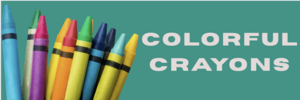
From ReadWorks.org
First, view this video. Then, read about the myths of Thanksgiving – find out what is true and what isn’t!! In the comments section below, tell us what surprised you!
The Mayflower brought the group of English settlers now known as the Pilgrims to North America. Leaving England in the fall of 1620, the Pilgrims were attempting to land near the mouth of the Hudson River, but instead ended up in Cape Cod Harbor. Plymouth, the colony established there by the Pilgrims in 1621, became the first permanent European settlement in New England. The story of the Pilgrims and their harvest feast hassince become one of best-known in American history, but you may not know it as well as you think. Discover the facts behind these well-known Thanksgiving myths!
MYTH: THE FIRST THANKSGIVING WAS IN 1621 AND THE PILGRIMS CELEBRATED IT EVERY YEAR THEREAFTER.
Fact: The first feast wasn’t repeated, so it wasn’t the beginning of a tradition. In fact, the colonists didn’t even call the day Thanksgiving. To them, a thanksgiving was a religious holiday for which they would go to church and thank God for a specific event, such as the winning of a battle. On such a religious day, the types of recreational activities that the Pilgrims and Wampanoag Indians participated in during the 1621 harvest feast–dancing, singing secular songs, playing games–wouldn’t have been allowed. The feast was a secular celebration, so it never would have been considered a thanksgiving in the pilgrims’ minds.
DID YOU KNOW?
The Mayflower was originally supposed to sail with a sister ship, the Speedwell, but it proved unseaworthy, and the Mayflower made the journey alone.
MYTH: THE ORIGINAL THANKSGIVING FEAST TOOK PLACE ON THE FOURTH THURSDAY OF NOVEMBER.
Fact: The original feast in 1621 occurred sometime between September 21 and November 11. Unlike our modern holiday, it was three days long. The event was based on English harvest festivals, which traditionally occurred around the 29th of September. After that first harvest was completed by the Plymouth colonists, Gov. William Bradford proclaimed a day of thanksgiving and prayer, shared by all the colonists and neighboring Indians. In 1623 a day of fasting and prayer during a period of drought was changed to one of thanksgiving because the rain came during the prayers. Gradually the custom prevailed in New England of annually celebrating thanksgiving after the harvest. During the American Revolution, a yearly day of national thanksgiving was suggested by the Continental Congress. In 1817 New York State adopted Thanksgiving Day as an annual custom, and by the middle of the 19th century many other states had done the same. In 1863 President Abraham Lincoln appointed a day of thanksgiving as the last Thursday in November, which he may have correlated with the November 21, 1621, anchoring of the Mayflower at Cape Cod. Since then, each president has issued a Thanksgiving Day proclamation. President Franklin D. Roosevelt set the date for Thanksgiving to the fourth Thursday of November in 1939 (approved by Congress in 1941.)
MYTH: THE PILGRIMS WORE ONLY BLACK AND WHITE CLOTHING. THEY HAD BUCKLES ON THEIR HATS, GARMENTS, AND SHOES.
Fact: Buckles did not come into fashion until later in the seventeenth century and black and white were commonly worn only on Sunday and formal occasions. Women typically dressed in red, earthy green, brown, blue, violet, and gray, while men wore clothing in white, beige, black, earthy green, and brown.
MYTH: THE PILGRIMS BROUGHT FURNITURE WITH THEM ON THE MAYFLOWER.
Fact: The only furniture that the Pilgrims brought on the Mayflower was chests and boxes. They constructed wooden furniture once they settled in Plymouth.
MYTH: THE MAYFLOWER WAS HEADED FOR VIRGINIA, BUT DUE TO A NAVIGATIONAL MISTAKE IT ENDED UP IN CAPE COD MASSACHUSETTS.
Fact: The Pilgrims were in fact planning to settle in Virginia, but not the modern-day state of Virginia. They were part of the Virginia Company, which had the rights to most of the eastern seaboard of the U.S. The Pilgrims had intended to go to the Hudson River region in New York State, which would have been considered “Northern Virginia,” but they landed in Cape Cod instead. Treacherous seas prevented them from venturing further south.
 A fractal is a never-ending pattern. Fractals are infinitely complex patterns that are self-similar across different scales. They are created by repeating a simple process over and over in an ongoing feedback loop.
A fractal is a never-ending pattern. Fractals are infinitely complex patterns that are self-similar across different scales. They are created by repeating a simple process over and over in an ongoing feedback loop. By using the roll-a-challenge dice from Destination Imagination, you will be able to create more than 200 different Instant Challenge combinations. Just round up the supplies listed on the “Use” die, cut and glue or tape all three dice and you’re ready to get started!
By using the roll-a-challenge dice from Destination Imagination, you will be able to create more than 200 different Instant Challenge combinations. Just round up the supplies listed on the “Use” die, cut and glue or tape all three dice and you’re ready to get started!

 ock has set up an
ock has set up an 

 Let it Snow, Let it Snow, Let it Snow! Explore this math mini spark to learn more about the snowflakes.
Let it Snow, Let it Snow, Let it Snow! Explore this math mini spark to learn more about the snowflakes. 


 Perplexors are logic puzzles that can help improve deduction reasoning skills. They are available in different levels. By using the “cross-out-and-circle” technique, you will practice logical thinking in order to find the correct answer. This math mini spark is brought to you by Hailey K. from Rockbrook.
Perplexors are logic puzzles that can help improve deduction reasoning skills. They are available in different levels. By using the “cross-out-and-circle” technique, you will practice logical thinking in order to find the correct answer. This math mini spark is brought to you by Hailey K. from Rockbrook.